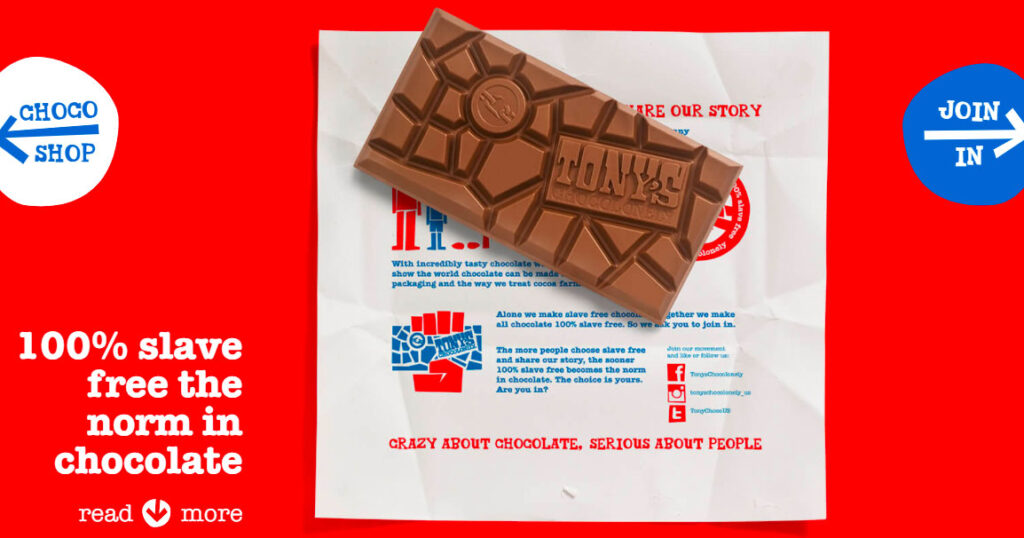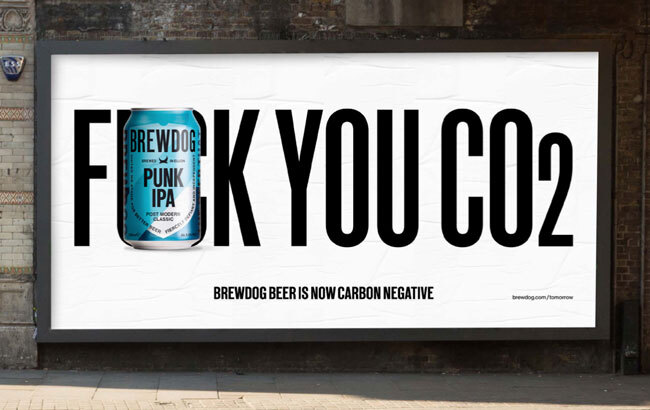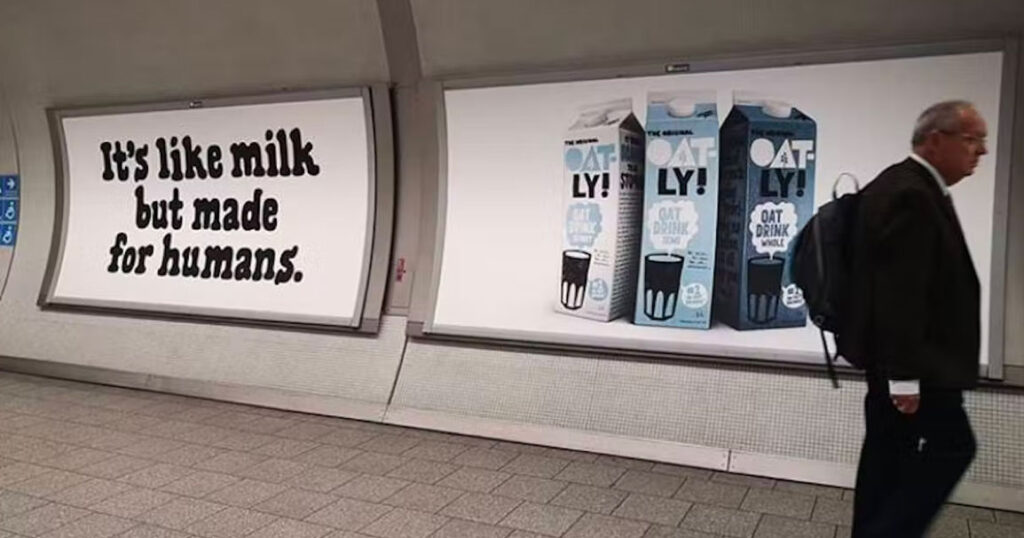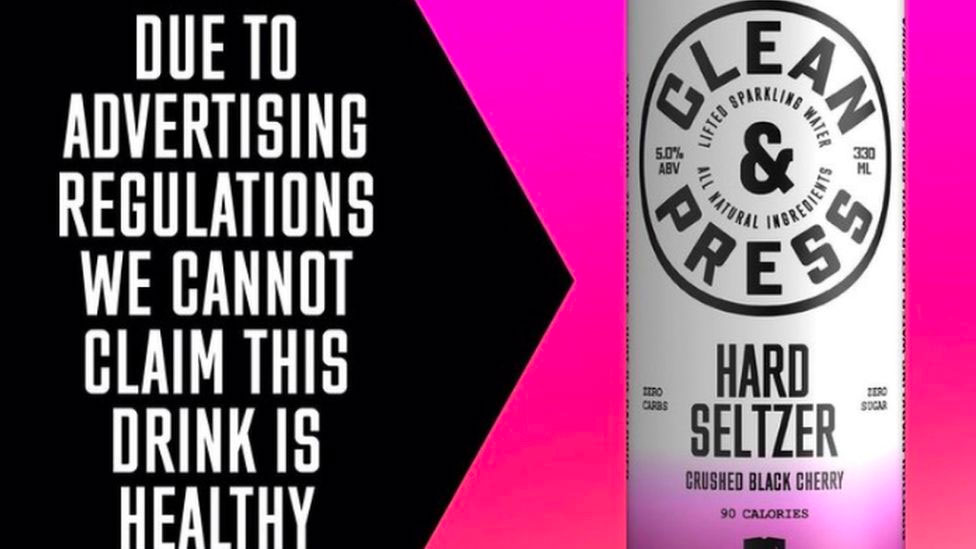In the hyper-competitive food and drink landscape, effective brand storytelling can make all the difference in setting your brand apart from the rest. A well-crafted brand story can connect with consumers on an emotional level, establish a sense of community, and drive sales and brand recognition.
Here are 15 tips to help you tell your food and drink brand story effectively, along with some examples from scaling challenger brands:
1. Define your brand’s personality and values
Before crafting your story, identify your brand’s personality and values. This foundation will guide your storytelling and help you connect with your target audience. Tony’s Chocolonely, the iconic Dutch chocolate brand, uses storytelling to highlight their commitment to ending slavery and exploitation in the cocoa industry. Their brand personality is playful and lighthearted, but their values are serious and impactful.

2. Know your audience
Understanding your target audience’s values, interests, and behaviours can help you craft a story that resonates with them. Brands like BrewDog know their audience well – they target “beer geeks” and craft beer enthusiasts. Their brand story focuses on their rebellion against the mainstream beer industry and their commitment to sustainability and community.
3. Be authentic
Authenticity is key in storytelling. Be transparent about your brand’s values, mission, and history. Oatly, the Swedish oat milk brand, uses storytelling to highlight their commitment to sustainability and plant-based products. Their brand story is authentic and transparent, showcasing their journey from a small Swedish oat mill to a global brand.
4. Use emotion
Emotion is a powerful tool in storytelling. Use it to create a connection with your audience and evoke positive feelings. Tony’s Chocolonely uses emotion to create a sense of empathy and urgency around their mission to end slavery in the cocoa industry. Community is built through collective action and the idea of being part of a bigger tribe.
5. Keep it simple
Don’t overcomplicate your story. Keep it simple, easy to understand, and relatable. BrewDog’s brand story is simple and straightforward – they’re a craft beer brand that’s committed to sustainability and community.

6. Make it visual
Use visuals such as photos, videos, and graphics to enhance your story and bring it to life. Oatly’s brand story is brought to life through playful and creative visuals that showcase their commitment to sustainability and plant-based products.
7. Be consistent
Ensure that your brand story is consistent across all platforms and communication channels. Tony’s Chocolonely uses consistent messaging and visuals to reinforce their brand story and mission across all touchpoints.
8. Make it memorable
Make your story memorable by creating a unique and distinctive voice that stands out. BrewDog’s brand voice is irreverent and edgy, which sets them apart from more traditional beer brands – they shake up the category, say and do things which other brands wouldn’t dream of doing.
9. Show, don’t tell
Use storytelling to show your brand’s values, rather than just telling your audience about them. Oatly uses storytelling to showcase their commitment to sustainability and plant-based products through real-life examples and innovative products.

10. Use real examples which will resonate with consumers
Use real-life examples to demonstrate how your brand is making a positive impact on people’s lives. Tony’s Chocolonely shares real stories of people affected by slavery in the cocoa industry, highlighting the impact of their mission.
11. Leverage customer stories
Share customer stories that showcase the positive impact your brand has had on their lives. BrewDog highlights customer stories of sustainability and community involvement, showing how their brand is making a difference.
12. Make them laugh
Humour is a powerful tool in storytelling. Use it to create a lighthearted and memorable story. Tony’s Chocolonely uses humor to convey their serious message about ending slavery in the cocoa industry. Their website features a “Tony’s Test Kitchen” section where they share fun recipes and chocolate-related content.
13. Be relevant
Keep your brand story relevant to current events and trends. Oatly’s “Wow, No Cow” campaign capitalised on the growing trend of plant-based diets and the increasing demand for sustainable food options.
14. Use a strong call to action
Use storytelling to inspire action and encourage your audience to get involved. Tony’s Chocolonely encourages their customers to take action by signing their “Sweet Solution” petition to end slavery in the cocoa industry.
15. Be adaptable
Be open to adapting your brand story as your brand grows and evolves. BrewDog’s brand story has evolved over the years to reflect their growing sustainability initiatives and community involvement.

By following the 15 Tips for FMCG Brand Storytelling outlined in this blog, and learning from successful brands like Tony’s Chocolonely, BrewDog, and Oatly, you can craft a compelling brand story that resonates with your audience and sets your brand apart in a competitive market (and category). Whether you’re just starting out or looking to refresh your brand, effective storytelling is a powerful tool for building a strong brand prescence and creating lasting connections with your customers.

















Leave a Reply